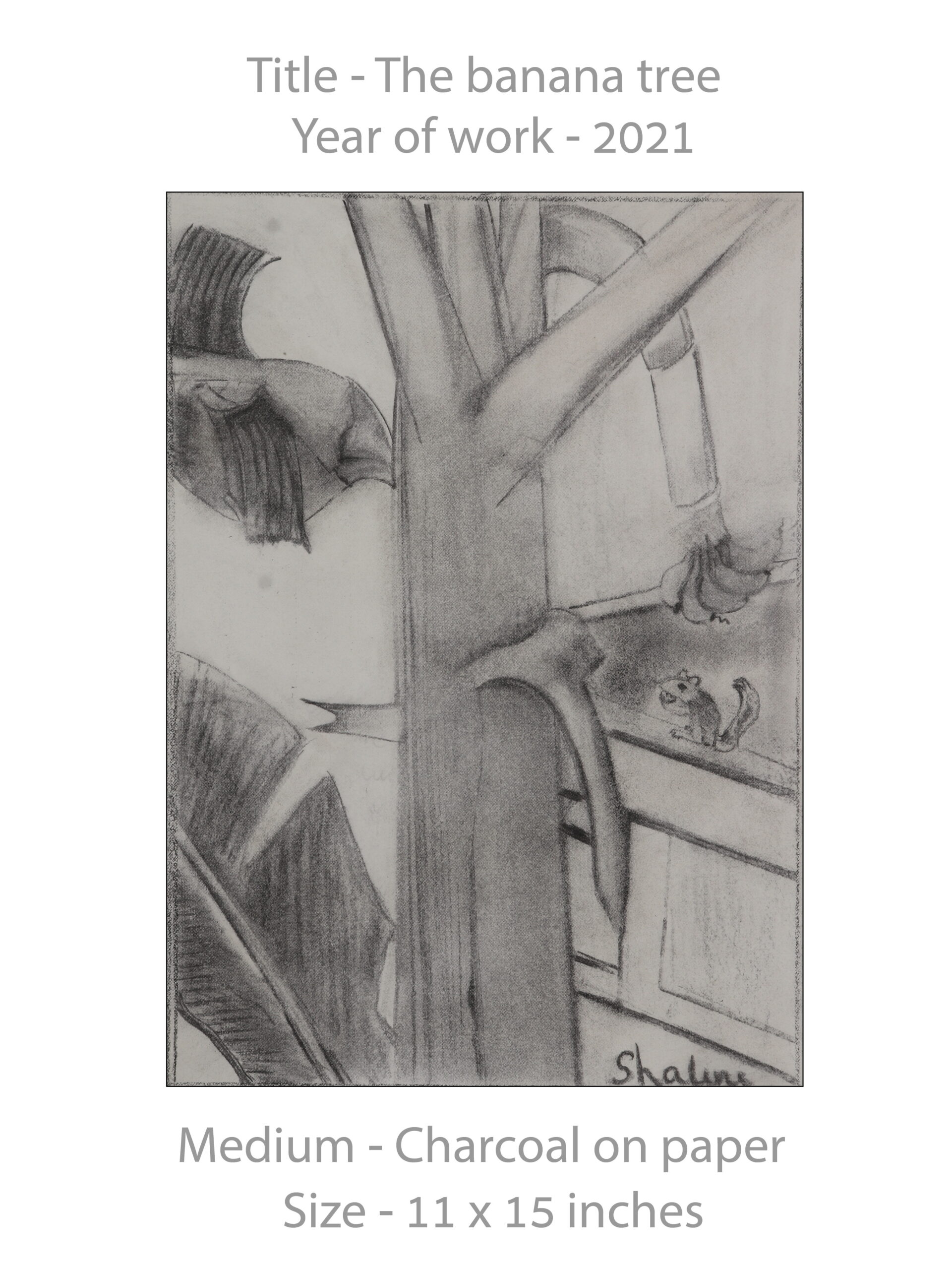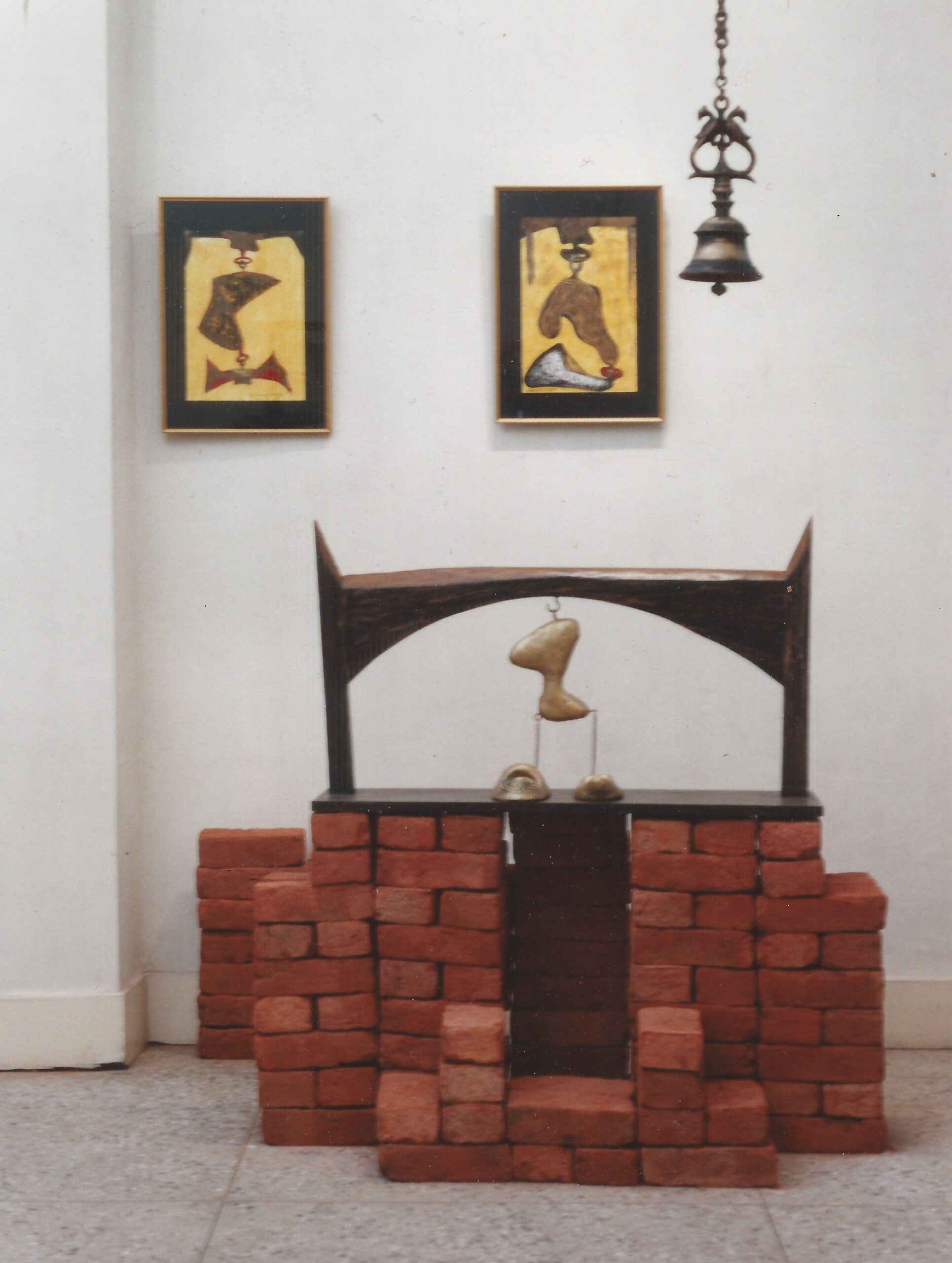The Cinema of M.F. Husain
M.F. Husain’s two feature length fiction films, Gaja Gamini and Meenaxi are classic examples of having one’s cake and eating it too. In each case, the cake is delectable. True that the two films are not for a mass audience whatever that may mean, but that there is a sizeable audience for them, mainly urban, is beyond dispute. Had they been promoted properly, there would have been jam for the distributors and exhibitors. These two films are genuinely experimental and also eminently accessible to those with open minds-not necessarily intellectual or in tune with European Cinema-but just receptive to new ideas. They share certain avant-garde qualities with Ritwik Ghatak’s ‘Komal Gandhar’ (1961) and are even more advanced in terms of ideas and equally fluid in execution.
It is both unfair and unrealistic to compare Husain’s achievements with that of other artists – painters and sculptures – who have also made films. In 1967, his Short, Through The Eyes of a Painter won the top prize in its category at the Berlin Film Festival. Shortly afterwards, an illustrious colleague Tyeb Mehta also made a Short for the same producer, Films Division of India (Government run) in which a slaughterhouse figured prominently. It too was widely appreciated. Then Gopi Gajwani, a painter who also worked with Span Magazine an organ of the United States Information Service, made from his own pocket two abstract short films in 35mm. They were shown once or twice and disappeared for nearly 30 years only to surface during the recent Golden Jubilee Celebrations of Lalit Kala Akademi. Both Mehta and Gajwani were interesting film-makers who might have found a voice in the New York underground cinema of the 1950s and 60s. Sadly neither proceeded further with film-making for whatever reason.
Husain never let go of his dream of making fiction films while he continued to paint with his customary zeal. As a lad he wanted to be an actor in Hindi cinema, but that did not happen. He, instead started to paint large banners and hoardings to publicise popular movies, an exercise that gave his line power and eloquence. He has always been an avid filmgoer nursing a secret desire to direct. When the opportunity came he was becoming bored with his celebrity status. Everything he did was fodder for gossip columnists.
Husain’s relationship with women for over four decades has intrigued many, but his understanding of the feminine psyche has seldom if ever been appreciated. He is one of the few men anywhere in the world truly at ease in the company of women. Gaja Gamini and Meenaxi are his tribute to womanhood : playful, subtle, witty, humorous and even wise. He is without consciously intending to be one, a woman’s director.
Neither Madhuri Dixit (Gaja Gamini) nor Tabu (Meenaxi) has ever been directed with more finesse. In each case there seems to have been a complicity with the director; a rare oneness.
Both Gaja Gamini and Meenaxi are episodic in nature, supple in there handling of time. They are, for all the narrative ballast they carry, essentially explorations in feminine psychology.
Meenaxi is about a blocked writer’s muse in Hyderabad who sells perfume, more so metaphorically, for she sets him on a course of self-discovery and understanding. This journey takes the form of a novel-in-progress, which she helps Nawab (Raghuvir Yadav) the protected old world aristocrat man-of-letters, write. It is a process that we the viewers share in with continuous pleasure.
It begins with a celebration of the engagement of Nawab’s youger sister where he fortuitously meets Meenaxi (Tabu). A qawwali, Noor Alla is being sung which runs like a leit motif in the film and is crucial towards its understanding. When in the final sequence of the three-episode film the words Yeh Barkeye Tajjali (This bolt of lightening) are sung from this very qawwali, Husain’s cinematic intentions and credo for living are made transparent. There is a joy that communicates itself, a transformation of dull and mundane reality into beauty-fleeting but recurring; each time new and significant. Here, as in Gaja Gamini Husain’s understanding of cinema is truly remarkable, he knows that its prime business is to create and sustain an illusion.
Here content has no meaning by itself but only when it is expressed through completely filmic means. Realistic and un-realistic cinema and all else are but convenient labels. What counts is the sudden discovery of the truth through paradox, humour, wit and intelligence. A touch as light as Husain’s is essential for such an undertaking.
Ashok Mehta’s camera in Gaja Gamini serves Husain’s vision faithfully, even beautifully in patently artificial surroundings. It relies on building atmosphere and capturing facial expressions to help articulate conceptions that attempt to find a mean between what seems to be painterly and musical preoccupations. His lighting, compositions and camera movements veer towards classicism. It is after all a move from the world of P.C. Barua’s Devdas (1935) and hence Husain’s youth-a strategically placed bullock cart in an early sequence confirms this view-to a sparking creative life in wise octogenarian splendour. It is both a stylish and a stylized film.
Shamistha Roy is art director in both films. In Gaja Gamini her challenge was to create a poetic reality out of deliberately artificial settings. Meenaxi of course, gave her more freedom because of its sweep and its intimate association with the naturalistic (physical) world. She comes through admirably on both occasions.
Gaja Gamini had veteran Bhupen Hazarika for the songs and dynamic young tabla player Anuradha Pal doing the background score. Hazarika’s songs are melodic and unusual without being intrusive. Pal’s racy tabla acts in dynamic counter point to a gently flowing story.
Nawab’s literary odyssey and Meenaxi’s pivotal role in it is what propels the film forward. The second episode is set in Jaisalmer, where she is transformed into a Rajasthani prince’s niece, beautiful aware and socially committed. An ardent water conservationist. By this time Nawab has ‘invented’ Kameshwar (Kunnal Kapoor) so that he can be her suitor. This tale embraces abstract and concrete ideas like desire, emotional fidelity, illusive stirrings of love, and they are highlighted by two sparkling songs, Rang Haiye-Rang Haiye, and Ye Rishta, whose picturisation show an acute awareness of current marketing and advertising trends in electronic and print media.
The vocabulary of chic Advertising and Travel films is stood on its head with impish delight to create genuine romance. This is to be sure, a trapeze act without a net and Husain and his young son Owais, also his indefatiguable associate, come through with flying colours. Meenaxi shows a greater daring in the recognition of primary feelings than Gaja Gamini and a youthful energy charges every frame in it.
Bombay Film Industry wizard Waman Bhonsle of the Waman-Guru duo edited Gaja Gamini and rose to the occasion. His vast skill and experience was invaluable in making such a complex film a success. Meenaxi has availed of Sreekar Prasad’s exceptional editing skills. He brings an easy flow to a story that could have easily gone out of hand.
Meenaxi, of necessity looks and feels improvised, even tentative but its tentativeness is its strength. Gaja Gamini is more centered its emotions more distilled, there is the voice of experience in every idea expressed and its wit and humour is more worldly. Here Madhuri Dixit playing the heroine with the majestic female elephant’s gait is a fully realized woman in each of her several avatars. It is a terrific adventure in time and the nature of memory.
Husain painting dark rain-laden monsoon clouds on a canvas in the first sequence and then, the repeated descent of a bundle (gathari, usually carried by woman) from top frame in double quick time with the immortal blind singer from the early talkies, K.C. Dey singing Teri Gathari Main Laga Chor Musafir Dekh Zara (Beware Traveller, A Thief is about to steal your belongings) to bridge a time lag of over 65 years, on the sound track, sets the tone. Already ambiguity and awareness are harnessed together for what will be a poetic exploration of woman and her role in different civilizations spread over a time span of a millennium.
Kalidas, Leonardo da Vinci, C.V. Raman, are all aware of Gaja Gamini and care for her. Only Shahrukh, played by superstar Shahrukh Khan, an international photographer, is in love with her. She loses him in a war. Husain’s ideas of life and art find deeply satisfying expression in a studio bound production.
Meenaxi, is film mostly out in the street or in nature. It is an onward journey of a staid, middle-aged writer and his attempts through his writing, aided by the mysterious, feminine Meenaxi to find out what constitutes life and makes it worth living. Nawab travels from Hyderabad to Prague to thank Maria, a character of his ongoing novel who works as a stage actress and waitress and is really a metamorphosed Meenaxi, for giving him a perspective on his work and therefore life. Maria loves the traveller Kameshwar, who has ‘progressed’ from the previous episode in Jaisalmer to this one. Originally, he was a belligerent Hyderabadi motor mechanic who wanted to become a singer. Theirs’ is a youthful love full of creative potential.
Nawab’s novel is not complete but a new realization of life’s beauty has dawned on him. He ‘dies’ in his quest and re-awakens to the strains of the qawwali, Noor Alla and sees Meenaxi with new eyes as dancers, darvesh-like, whirl around her. He is enchanted all over again. A cycle of understanding life and its myriad possibilities completes itself and a fresh one begins. Nawab achieves Barkat (progress, realization really) through Harkat (activity) thanks to Meenaxi’s guidance.
Santosh Sivan’s cinematography in Meenaxi is lively, buoyant and many a time, air borne. It is important to keep the camera moving in what is an impressionistic film. A series of impressions instead of incidents comprise the narration. Each one is clear yet ambiguous, pulling in opposite direction creating a poignant feeling of truth, though not always by design.
A.R. Rahman in Meenaxi has composed melodies that are beautiful because they are apt and vice-versa. His background score evokes youthful romance. His music is a bridge between the past and the present pointing towards the future.
Songs have a crucial role in this film. Clarity and ambiguity play hide and seek in each of the six that are there. They chart Kameshwar, Meenaxi and therefore Nawab’s progress in their journey through life and their appreciation of it. Owais Husain, the painter’s younger son started out as his father’s assistant in Gaja Gamini. Here in Meenaxi, he is associate director and screenplay writer. Much of the film’s coltish, romantic vigour comes from him. Song picturisation seems to be his forte. He even integrates dance into the film’s flow with aplomb. Raeima Husain, his young, talented wife has been of considerable help in these areas as she has been in producing an unusually demanding film. But the overall visualization, aesthetic and philosophical slant, not to forget its sense of fun, is all M.F. Husain’s despite his having reportedly said, “It is seventy percent Owais’s film and thirty percent mine”. In this project he has been like the great jazz bandleader and pianist Count Basie, who directed his band with precise, economic piano playing. It was said of him that he needed only two notes to express a musical idea when others needed twenty.
There is a seamless poetic continuity of ideas and feelings running through Gaja Gamini and Meenaxi. They joyously affirm the continuous cycle that nature goes through to renew itself.












Ѕpot on ѡith this write-up, I honestly feеl thіs amazing sіte needs far more attention. I’ll probably be returning to see more, thanks
for the information!